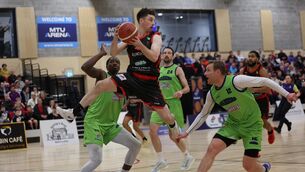Designer drugs
That the drug is so potent, however, that just a couple of drops slipped under the tongue could help make an athlete run faster, jump higher and throw further is a little more difficult to swallow.
THG, as it is known to those of us outside the chemical laboratories, is at the centre of the biggest doping scandal in sport since EPO stuck a spoke in the wheel of the Tour de France in 1998 or Ben Johnson stopped the Seoul Olympics in its tracks 10 years earlier.














